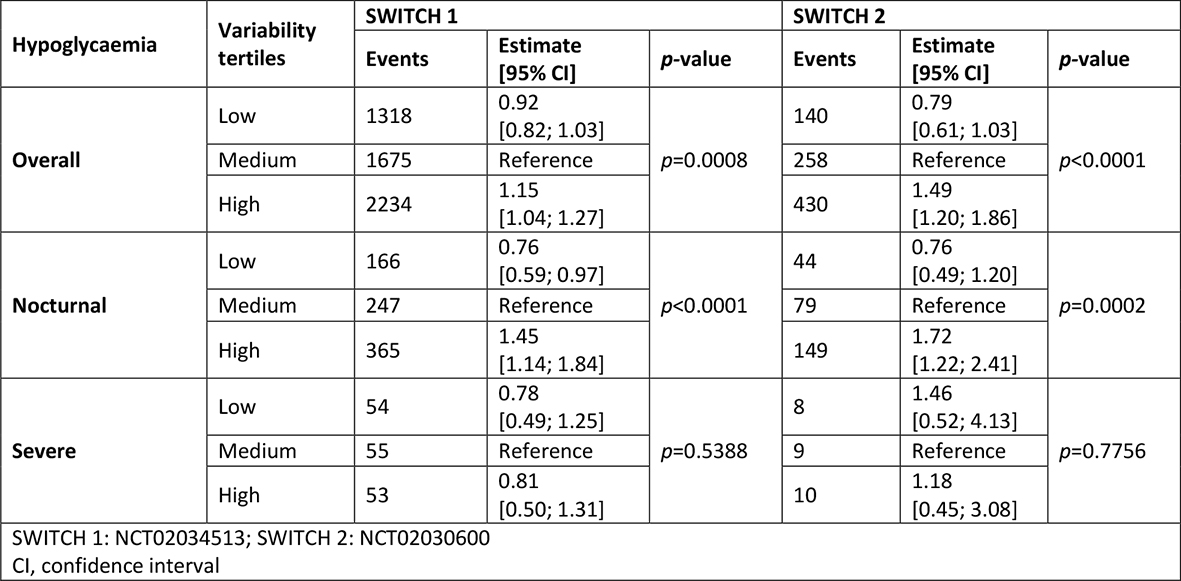Poster Presentation The Joint Annual Scientific Meetings of the Endocrine Society of Australia and the Society for Reproductive Biology 2017
Within-day variability based on 9-point profiles correlates with risk of overall and nocturnal hypoglycaemia in adults with type 1 and type 2 diabetes (#188)
Higher glycaemic variability has been previously linked to an increased risk of hypoglycaemia.
The correlation between within-day variability, based on 9-point profiles, and hypoglycaemia was investigated in two double-blind, treat-to-target, crossover trials comparing insulin degludec once daily (OD) with insulin glargine U100 OD in adults with type 1 diabetes (SWITCH 1, n=501) or insulin-experienced adults with type 2 diabetes (SWITCH 2, n=721). Within-day glycaemic variability was calculated as the relative fluctuation of the 9-point profile, defined through the integrated absolute distance from the mean within-day variability. Variabilities were subsequently categorised into low, medium and high tertiles, based on the geometric mean. Hypoglycaemia was defined as overall symptomatic (severe or blood glucose [<3.1 mmol/L] confirmed), nocturnal symptomatic (00:01–05:59) and severe (requiring third-party assistance and confirmed by a blinded adjudication committee) events.
This analysis showed that an increase in within-day variability had a significant correlation with an increased risk of overall and nocturnal hypoglycaemia (Table). However, no correlation was found for severe hypoglycaemia in this dataset.
In conclusion, within-day glycaemic variability was associated with a risk of overall and nocturnal hypoglycaemia.
Table. Effect of within-day variability (9-point profile) on hypoglycaemia in SWITCH 1 and 2: low and high tertiles compared with the medium tertile.
